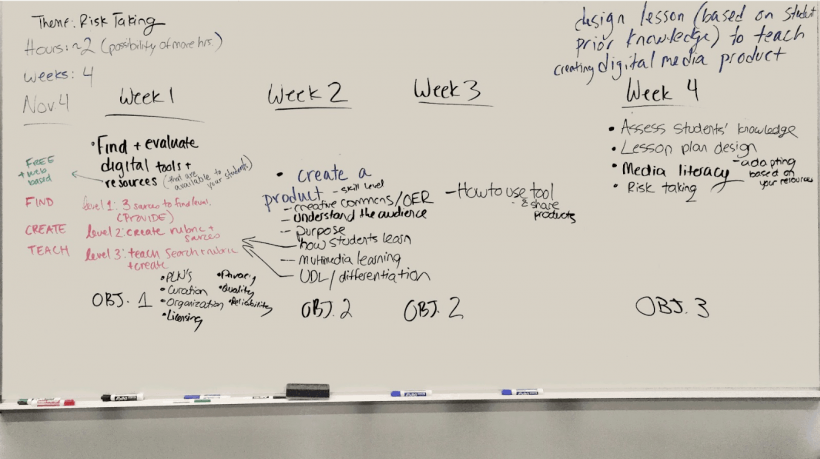Ready To Build An Online Course? What You Should Know Beforehand
Launching an online course takes time. You have to think about things you can teach, create a learning plan, write all the content, at times, record audios or videos, put it together in an appealing way, and do the marketing to sell the fruits of your work.
There is a ton of practices for creating a seamless learning experience for your students and launching an online course. However, here are the 7 main things to consider before you start custom eLearning course development.
1. Choose The Right Topic
The most common advice is "choose a topic you have a lot of experience in". However, sometimes, it’s better to deviate from the saying and turn it into "teach about something you would love to learn yourself". Here’s why this approach works:
- You’ll be invested in the online course because you will learn a lot yourself.
- The topic you’re interested in is likely worth to explore for others as well.
- You will teach others the way you would want to learn yourself.
2. Get To Know The Demand
Your topic might feel so important to you that it wouldn’t occur to think that no one else needs it. It’s important to define the target audience, however, it makes no sense to create something no one would benefit from.
There are a few ways to analyze demand depending on your budget, and skills.
a. Analyze The Competition
There are a few places you can analyze: Amazon best-selling books, podcasts on iTunes and Spotify, and online courses on Skillshare and Udemy.
Having a few competitors is good for one thing; it means the topic is needed. Also, you can follow in their footsteps while planning your own online course. Keep in mind, however, that a few powerful competitors can completely overpower your content. If you have a few of these, it might be better to consider a different topic.
b. Use A Keyword Analysis
Another way to analyze the demand is by seeing what people google. The main tool to get this data is the Keyword Tool created by Google. There, you can see a search volume for every search query as well as an estimated PPC (pay-per-click) in case you to want use search engine optimization tips.
c. Ask Your Audience
This idea might not be a solution for everyone. However, if you already have a couple hundred social media followers, a few dozen people on the email list, or a base of blog readers, why not ask these people if they are interested in your course.
One of the best ways to do it is by creating a poll with a few topics you’re considering for a course asking your followers to choose their favorite option. This is the most accurate way to make sure someone will (or won’t) be interested in your online course.
3. Choose The Way To Share Your Knowledge
Now that you are sure about the eLearning course development process, it’s time to think of the way you will present your knowledge to the audience. Let’s just go over a few things to consider:
a. A Series Of Posts
Your course can look like a number of posts, letters, etc., with nothing but plain text. On the upside, your students can go over the posts when they are in hurry, without having to specifically dedicate their time to eLearning. Also, these posts will be easy to make, and you’ll get a chance to save more time for promotion.
However, with text posts, it’s harder to lay out your ideas, rather than with a video or an audio. Also, this content can be stolen and shared with no copyright. That’s certainly a risk.
b. Video Lessons
Video eLearning course design is on the wave right now. Recording videos is a way to show step-by-step actions and explain everything clearly. Such a course can be aesthetically appealing and worth every dime a student pays for it.
Bear in mind, however, that video courses are not easy in making. You might have to invest a lot of your time as well as some money to get the editing software.
c. Mixed Content
The best idea is to add a little bit of everything to the course; these could be the videos with text transcriptions. Also, adding graphics is a nice way to spice things up and make sure all students will be happy with the way the content looks.
4. Decide On The Goal
There are different reasons why one wants to create an online course. The most common one has to do with income as selling an online course looks like a worthy investment for a small business owner to get into.
However, sometimes, people have completely different motivations for launching an eLearning product. For instance, those interested in connecting their branding and enhancing social media presence, may be willing to distribute their content for free as long as people get to know their name.
Other people might launch a course as a way to practice teaching. There are even cases when people start teaching in order to get better in something themselves. What are your motivations? That’s for you to decide.
5. Think About The Distribution Options
When the course is created, be sure your students will be able to get to know about it and use it. Choosing the right distribution option is one of the answers on how to make eLearning engaging. If getting a course is uncomfortable, no one will bother to do it.
Let’s take a look at a few options:
- A dedicated platform (like Skillshare)
- Social media (a private page on Facebook, etc.)
- A dedicated website
Distributing on a dedicated platform, you get all the range of tools for the online course management, you’ll also become a part of a dedicated community. However, you won’t have a complete freedom of distribution since a fair share of operations is supervised by the platform.
Distributing your courses via social media is pretty comfortable as well. However, it misses out on branding possibilities and doesn’t look as sophisticated as a custom course might.
Building a website is pretty expensive. On the upside, however, you’ll have the complete freedom of management because a website is a comfortable way to sell an online course. To build it, you’d need to make your choice with the web development technology to use because there’s many of them.
Email courses would be perhaps the most convenient option if not for spam filters. If you’re not willing to risk going into "Spam" instead of your student’s inbox, it’s better to resist using email as the main distribution platform.
6. Success Evaluation
At the end of the day, you would want to know whether your online course has failed or succeeded. Well, no one can tell you that except for yourself. Knowing what will be considered a success of an online course is so important that it’s, in fact, recommended to plan before even starting a course.
Here are a few goals course-starters usually set:
- Dollars earned
- Blog/newsletter, social media page subscribers
- Participants
- People who want the course to continue
Which of the following is the goal for you? Write down a list of objectives you want to achieve after starting an online course.
7. Set A Deadline
Creating an online course is huge. Now that you have most of the details mapped out, it might seem you got it. However, as you sit down and start writing, other things might come up.
What was supposed to be a few-months commitment can finally result in years of fruitless work. To make sure you always keep track of time, set a deadline for every stage, for example when writing the content, formatting the course, and promoting activities.
With these deadlines in mind, it will be easier to follow through with such an impressive product as an online course.
Conclusions
- An online course is a commitment. It’s important to have every step on the way planned in advance to save yourself from stressing out in the process.
- The topic is the core of the course. Choose something you’re passionate about and wouldn’t mind investing a lot of your time into.
- When planning the course, it’s encouraging to know how to find your target audience. Ask your audience or analyze competition to know the demand for the topic on the market.
- There are different ways to share your knowledge: text materials, videos, graphic, etc. Choose the one that aligns with your skills and the preferences of different types of the target audience.
- Be clear on your goals. Is it money, impact, branding value, or the teaching practice of your skills?
- Analyze different distribution options for good marketing. You can use a dedicated platform, a social media page, a custom website, or email tools to share the course.
- It’s important to know if your course succeeded or failed. Sit down to think on what a successful eLearning product would mean to you.
- Keep track of time. Work under a deadline. That way, you stand a chance of following through with an online course.









